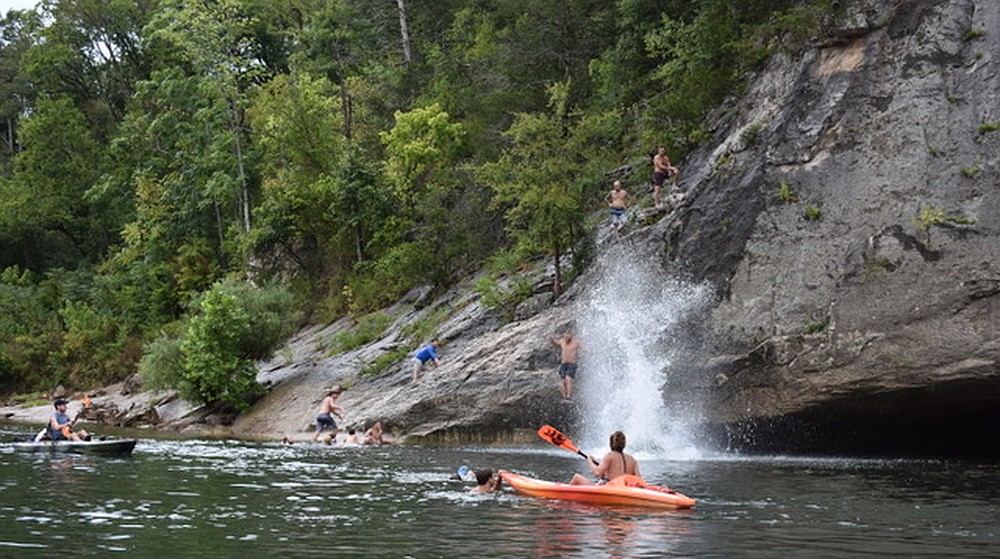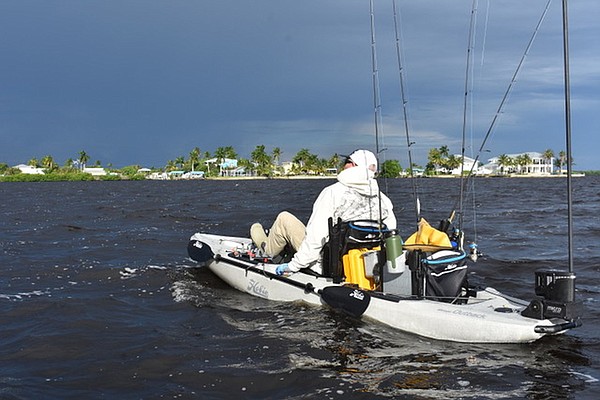Arkansans have flooded the state’s waterways during the coronavirus pandemic, and many discovered our lakes, rivers and streams in kayaks.
Kayaks are convenient, portable and low-impact vehicles to enjoy the water. Most are manual powered with legs or arms, so they also promote good health by providing rigorous cardiovascular exercise and full body workouts. Paddle-powered kayaks work the entire upper body, and pedal kayaks work the calves, thighs and hips.
Kayaks are available from less than $300 to more than $4,000. You can buy an inexpensive plastic model from sporting goods stores, farm supply stores and department retailers. Pelican and Sundolphin are popular models in this lineup. Available in sit-in and sit-on configurations, they are serviceable and amazingly durable entry level boats that are light enough for one person to carry.
Sit-on-top models are best for fishing because they place the rider above the waterline. Also, they do not have a cockpit to constrain an angler’s arms, allowing full range of upper body motion for fishing. They usually have two fishing rod holders and sufficient deck space for a small soft-side cooler and a small amount of tackle.
Because they are so light and portable, some duck hunters use them to quietly access secluded duck holes in green timber. They are also surprisingly seaworthy in rough water.
Ascending in quality, you will find brands like Perception, Ocean Kayak and Ascend. They cost from $500-$1,000, depending on hull design and options. This price range will give you a roto-molded hull that’s made of thicker, tougher material than entry level boats. You also get a better, more comfortable seat, adjustable foot pegs and dedicated deck compartments for tackleboxes and soft-side coolers. They also have interior storage areas with sealed hatches and paddle holders. Hatch seals vary widely in design and quality. Watertightness varies dramatically.
All of these kayaks are paddle boats, too. Because most are considerably longer than the cheap models, they are faster and track straighter.
Pedal kayaks
For about $2,500, you can get a pedal boat. There are two types. One, exemplified by Native, is a hybrid. The Native Slayer is a nimble paddle boat, but you can also get a small, pedal-powered propeller apparatus that fits into a hull recess. If you need to go in reverse, you can pedal it backwards. The downside to this device is that its depth is fixed. It snags the bottom in shallow water and hits rocks. You must lift it out of the water and paddle through the shallows.
The other option is Hobie, which initiated the pedal concept with its trendsetting Mirage Drive. Like the propeller device, it fits in a hull recess. It contains a simple chain-drive apparatus that operates a pair of fins that extend beneath the hull. When you work the pedals, the fins go up and down to the sides perpendicular to the hull. It feels effortless, and it is very fast. In shallow water, simply extend the paddles to maximum, which pushes the fins flush against the hull and removes them from harm’s way.
The disadvantage to the Mirage Drive’s first generation was that it could not move in reverse. Backing up or quick turns required a paddle. Hobie remedied that issue with its Mirage 360 drive. It allows you to rotate the fins and go not only backwards, but also side to side. I used the Mirage 360 for the first time in November in southwest Florida off Matlacha Island. It corrects all of Hobie’s early deficiencies.
All top-grade roto-molded kayaks, including Hobie, Native, Jackson, Eddyline, 3 Elements, Old Town and a dozen others, are stable enough for stand-up fishing. This improves visibility while reducing stress and strain on hips and shoulders. It doesn’t take long to master your balance. When you get comfortable, you can fish at any angle and even fly fish.
Inflatable kayaks are new, highly portable developments that enable kayakers to access remote waters where no developed access exists. Hobie’s Mirage ITrek is the pacesetter in this area. It’s basically an inflatable paddleboard with a seat and a Mirage Drive. Deflated, it packs into a highly compact package that fits in a car trunk. It inflates quickly with a supplied air pump. The body is a honeycomb of cells that maintains integrity and rigidity if the hull is punctured. Inflated, the ITrek is light enough to carry with one hand.
I spent a day paddling an ITrek 11 in southwest Florida. It is very fast and was very stable and dry in high, wind-driven swells and whitecaps. Unlike heavy, rigid hull kayaks which glide through water, the inflatables glide over the water, making a hollow, tapping sound as water slaps the hull.
Kayaks are increasingly popular for enjoying freshwater and saltwater. The Hobie Outback is a pedal-drive sit-on-top model that is very fast, stable and maneuverable, making it ideal for open water. Kayaks are also surpassing canoes in popularity on Arkansas streams because they are easier to handle and offer greater freedom than canoes.
(Arkansas Democrat-Gazette/Bryan Hendricks)

Kayaks are increasingly popular for enjoying freshwater and saltwater. The Hobie Outback is a pedal-drive sit-on-top model that is very fast, stable and maneuverable, making it ideal for open water. Kayaks are also surpassing canoes in popularity on Arkansas streams because they are easier to handle and offer greater freedom than canoes.
(Arkansas Democrat-Gazette/Bryan Hendricks)
Credit: Source link































